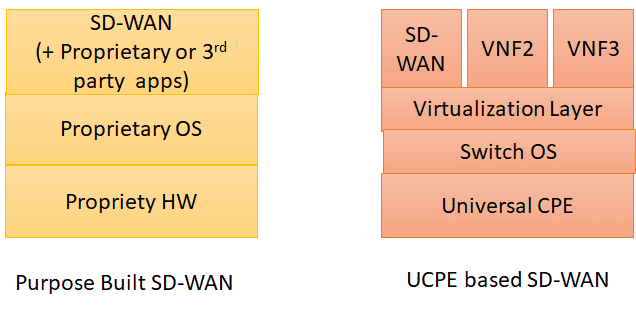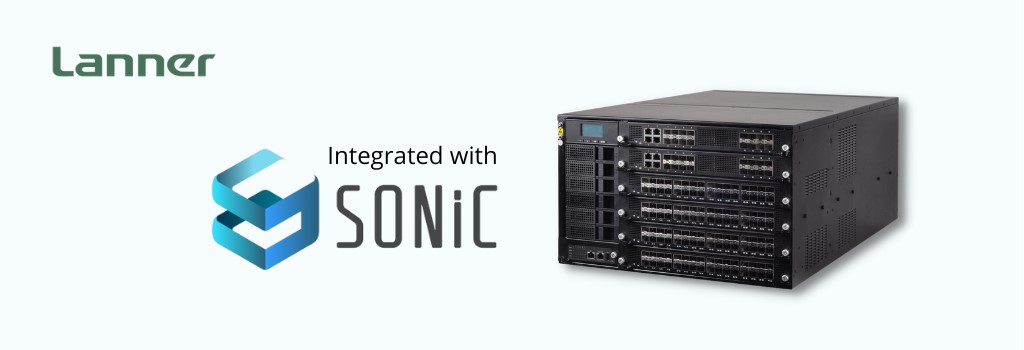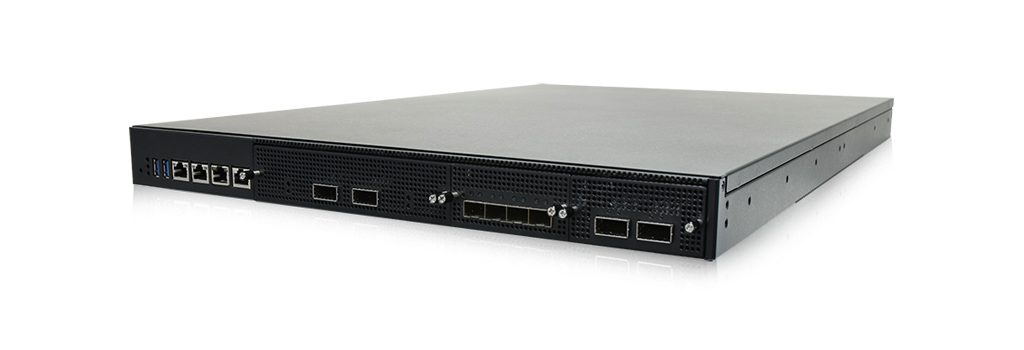So, you are looking for an SD-WAN CPE and want to know if a universal CPE (uCPE) or a purpose-built SD-WAN CPE is the right choice?
You will find a lot of choices in the market. It is better to know the pros and cons of all platforms before making a buying decision as a wrong decision here could result in increased CAPEX spending, inflexible platform, and vendor lockin which are not desirable.
Therefore, this blog aims to compare a uCPE for SD-WAN and how it differs from the purpose-built SD-WAN platform. This will help the decision-makers select the right platform choice for SD-WAN services and value-added applications.
But first, let’s see what uCPE is?
What is uCPE?
uCPE or universal customer premises equipment is an open platform that enables virtual functions by any vendor to run on commercial off-the-shelf (COTS) hardware. This is in contrast to purpose-built CPE that provides dedicated functions provided by the same hardware vendor.
Customers have two choices for SD-WAN, one Purpose-built SD-WAN CPE, and the other uCPE platform.
The following shows the difference between the two:
To have a fair comparison, we took a purpose-built SD-WAN CPE, which is platform-based and can support multiple applications, including SD-WAN. Some vendors call it uCPE, but it’s NOT a uCPE as the CPE runs propriety OS integrated with the hardware and is not open to every application.
In contrast, universal CPE can run any switch OS and standard-based virtualization layer to onboard SD-WAN by any party and other Virtual Network Functions (VNFs). uCPEs are suitable for deployment in branch offices as well in data centers.
Let’s try to compare the two in a few dimensions.
Vendor Lock-in vs. Vendor Independence
The purpose-built SD-WAN CPE is a recipe for vendor lockin. It is a tightly integrated stack provided by one vendor. When adding new applications and features to the box, the customer is highly dependent on a single vendor’s roadmap. Swapping any application is not easy.
On the other hand, universal CPE gives a choice at every layer and thus enables a best-of-the-breed selection of software components; The customer may choose the OS from any vendor and pick any applications it wants. If it starts with an SD-WAN vendor, it can swap it with any other SD-WAN vendor at a later stage.
So much so that it is easy to change the hardware as the application can be ported to new hardware easily. Thus, a customer can have more choices and more negotiation power to a customer.
Cost Factor
The CAPEX investment on universal CPE is much less than the purpose-built CPE with the same specs. The purpose-built CPE vendor has developed and designed the product over a long time and thus would like to recover costs from customers.
On the other hand, the universal CPE uses COTS hardware and commodity chipsets that are sourced easily at a better price. Because of the “commoditization,” the end-user becomes the ultimate beneficiary of the significant cost savings.
Extensibility and Flexibility
uCPE shines here. uCPE provides an open and disaggregated platform, where a customer gets a lot of choices to add more applications.
As the Virtual Network Functions onboarding is done in a standard way, there are fewer compatibility issues. Any uCPE OS vendor will provide a list of tested and integrated VNFs like SD-WAN applications, firewall vendors, IPS, IDS, DPI, Analytics, etc.
This choice will be minimal in the case of purpose-built SD-WAN CPE, which is testing with only a few 3rd party applications.
Digital Market Place
AWS has changed the way customers like to order services through the digital portal. Digital delivery is the new way of doing business.
Many Service providers want to offer network services on demand. The service provider’s customers can choose and select different SD-WAN vendors, security vendors, load balancers, etc. The customers can order services online and upgrade or downgrade the network service using a customer portal.
When combined with a robust orchestration and digital enablement layer, a uCPE can allow service providers to provide such flexible services.
Integration & Operation
On the face of it, it appears that purpose-built CPE wins here. As a single vendor develops and maintains the solution, integration issues will be less. All the applications are pre-validated, which means fewer operational costs and problems.
On the other hand, the traditional wisdom may say “universal CPE will require integrating different multi-vendor applications on a single platform” For example, “who will take the blame if something goes wrong.” It is easy to blame a single vendor if both software and hardware come from one vendor.
A customer does not need to deal with multiple vendors in the case of uCPE. A system integrator can play a vital role. He can take primary responsibility during integration and maintenance. A customer can pass complete responsibility to a system integrator thus the end-user gets worry-free support and a single point of contact.
In conclusion, the demand for universal CPEs (uCPE) has increased in Software-Defined Wide Area Network (SD-WAN). Customers want a flexible and future-proof platform that uCPE promises. On the other hand, purpose-built SD-WAN platforms are rigid and not extensible for future applications.
About Lanner’s uCPE Platforms.
Lanner is a leading manufacturer of vCPE/UPE and white box platforms for various applications like SD-WAN, NFV, SDN, Edge computing, and Open RAN. Lanners operates in the US through its subsidiary Whitebox Solutions ( www.whiteboxsolution.com)
LANNER vCPEs / uCPEs devices are pre-integrated with major SD-WAN and (Virtualized Network Function) VNF application providers. It offers various solutions customized for branch offices (small and medium offices) to large data centers in both desktop and rack-mounted form factors.









